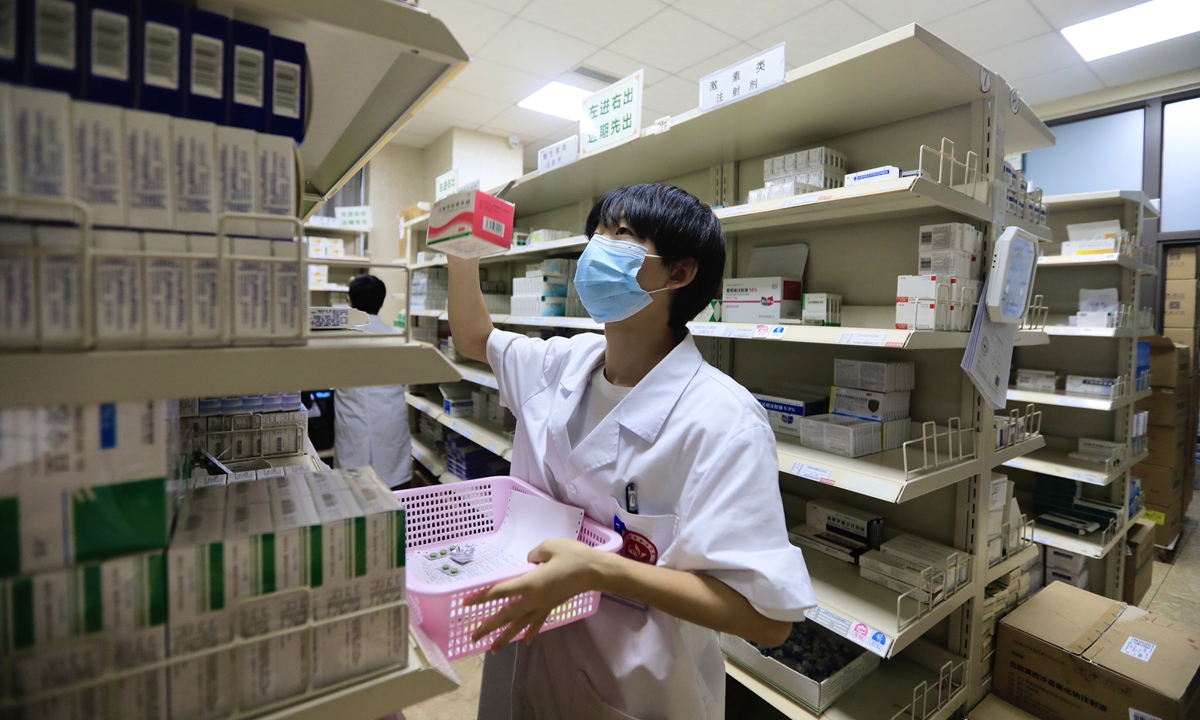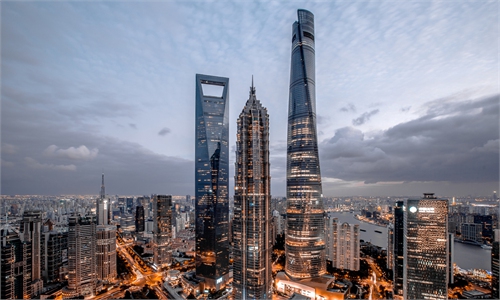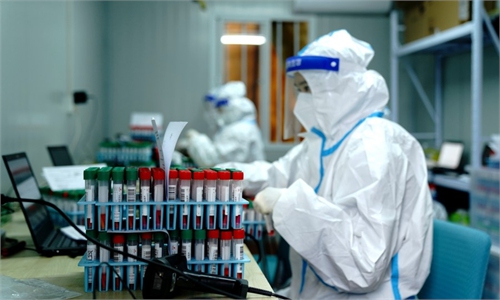
A medic group in Chengdu, Southwest China's Sichuan Province, help local residents in need to select drugs and deliver to their household amid a COVID flare-up on September 8, 2022. Photo: IC
Discussion of re-infection with COVID-19 has become trendy on Chinese social media after a bunch of users posted positive antigen results for the coronavirus. Epidemiologists whisked off concerns of a second wave coming, and they said that most people infected with COVID-19 now are those who did not contract the virus before.
Recently, some netizens posted pictures of their positive antigen tests on Chinese social media, claiming they were "re-infected" with COVID-19. A Nanjing netizen said on Chinese Instagram-like fashion and lifestyle-sharing platform Xiaohongshu that five people in her family tested positive for COVID-19 in recent days, almost four months after they first tested positive in December last year.
A company in Beijing on Sunday began to survey whether its employees had been infected with COVID-19 lately, and asked those who had contracted the virus to stay at home, the Global Times learned. Similarly, a primary school in South China's Guangdong Province is following a similar practice for teachers and students alike.
The Chinese Center for Disease Control and Prevention (China CDC), which has been monitoring COVID-19 infection numbers and new variants, said on Sunday that health departments reported 2,661 positive COVID-19 cases nationwide on Thursday.
The COVID-19 positive rate for Thursday was slightly higher than it was on April 13. On March 13, the China CDC announced that 1.3 percent of those who took nucleic acid tests were positive, and the rate on Thursday was 1.7 percent.
Chinese epidemiologists believed those who get infected twice are "rare cases." Most COVID-19 infections in China at the current stage are people who dodged the bullet during the first massive infection wave at the end of last year.
"From December until now, almost one-third of those who did not infect during the last wave are gradually getting infected. Later, more and more of those who haven't got COVID-19 will be infected, but the peak won't surpass even 10 percent of that in December last year," Wang Guangfa, a respiratory expert from Peking University First Hospital, told the Global Times.
Thus, there won't be palpable pressure on China's hospitals and the medical system, according to Wang, who expects a second wave will come in September this year.
Li Tongzeng, chief physician in the respiratory and infectious diseases department at Beijing You'an hospital, told the Global Times that the risk of being reinfected with COVID-19 will increase, but most people who are infected a second time will have relatively milder symptoms, thus the blow of the second wave to the medical system will be less severe than in December.
According to China CDC's data, the number of COVID-19 infections in China peaked at 6.94 million per day on December 22 last year and then began to fall gradually.
Speaking at a forum on Thursday, Zhang Wenhong, head of the infectious disease department at Huashan Hospital in Shanghai, also director of the National Center for Infectious Diseases, said that monitoring data showed that most of the current infections in China are people who haven't contracted the virus before.
Zhang noted that if the coronavirus mutates, some people will be re-infected after six months. But the scale will not be huge. However, if the mutation manages to break the immune barrier formed during the previous wave, an infection peak will come.
The China CDC claimed it had detected 12 new variants in this country. The center had found 42 cases of XBB.1.16 - referred to as "arcturus"— which has been the dominant variant in India since March. The China CDC assured the public, saying that there are a very small number of XBB.1.16 carriers, which have yet to form a transmission trend.
Although the scale won't be as huge as the previous wave, Zhang still called for stockpiling of small molecule antivirals of COVID-19, and at the same time establishing a model that could treat COVID-19 patients within 48 hours.
"I believe constant monitoring, warnings and stockpiling of medicines will enable us to respond rapidly to any mutations and run faster than the next infection," said Zhang.
The public are concerned if infections will surge during the upcoming May Day holidays, as a booking surge leads to large-scale gatherings.
Wang said it's likely that infections will climb during the May Day holidays. Yet the majority of people in China are vaccinated, and many have already been infected, which means high-level immunity among the public.
"Large-scale infection is unlikely," said Wang.


